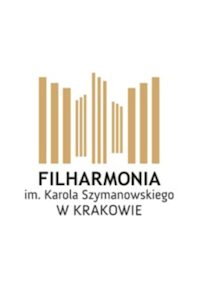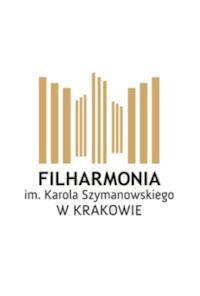From the beginning of its existence, Poland has been in contact with Eastern Christianity and Byzantine culture. Mission of St. Methodius did not miss the country of the Vistulans, whose nameless prince "teased" Christians, and then soon succumbed to the Great Moravian State and accepted the baptism imposed by it. In the times of the first Piasts, numerous dynastic relationships with Ruthenia can be noted - wars and alliances, marriages of Polish rulers with Ruthenian princesses. Located in Poland, now inconspicuous city - Drohiczyn - was the place of coronation of the first king of Ruthenia - Daniel Halicki, after whose great-grandson, Bolesław Jerzy Trojdenowicz, the inheritance in the form of Red Ruthenia was incorporated into his state by Casimir the Great. From then on, Latin and Ruthenian became the official languages of the Kingdom of Poland. However, it was the Polish-Lithuanian Union in Krewo that was a turning point in the history of Polish-Ruthenian cultural relations. The Duchy of Lithuania, despite the political dominance of the Lithuanian dynasty, was in fact a "Slavic Atlantis", where the Ruthenian element was ethnically dominant, and the state language was Old Belarusian, referred to even by the inhabitants of the Duchy of Moscow as Lithuanian. One of the most eminent rulers of the Grand Duchy, Prince Vytautas, considered himself the successor of the first Ruthenian princes and competed with Moscow, successfully "collecting" the Ruthenian lands under his scepter. The most important documents of this state were written in Old Belarusian, and many smaller dukes dependent on the Hospodar, the Grand Duke, came directly from the Rurykowicz family. Over time, the Lithuanian aristocracy was polonized, but despite this, the awareness of their own roots and religion - Orthodoxy, for whose rights they fought so often in the Commonwealth - has not completely died out in them. Contemporary inhabitants of Poland, whose grandparents and great-grandparents often came from the lands of the former Grand Duchy, are still the heirs of this wonderful heritage. Separated from the Grand Duchy and annexed to the Polish Crown in 1569, the lands of today's Ukraine were also a space not only for the unfortunate armed confrontation of Lachs and Ruthenians during numerous Cossack uprisings, but also for deep cultural ties, the fruit of which was the Ostrog Academy in Volhynia and the Kiev-Mohyla College and then the Mohyla Academy in Kiev, founded according to the patterns of Jesuit education, widespread in Poland. An important part of the Ruthenian culture is the rich writing tradition. The inhabitants of Ruthenian cities and the upper classes of society used writing much earlier than the inhabitants of ethnic Poland. Poland, however, was instrumental in popularizing the printing of Ruthenian books (the Szwajpolt Fiola printing house in Kraków); In the Commonwealth, the political habits of the inhabitants of former Ruthenia were occidentalized and elements of Ruthenian culture penetrated into the broadly understood Polish culture. Orthodox Christians, as well as Catholics in the Republic of Poland, were influenced by two powerful pillars of Orthodox monasticism - Peczerska Lavra and Supraśl, which are also important centers of liturgical music. Influences of Ruthenian culture can be found in Polish art - the Chapel of St. Trinity at the Lublin Castle, in the Świętokrzyska Chapel at Wawel.
Kiev - the mother of Ruthenian cities, for centuries associated with the history of Lithuania and Poland, played a very important role in teaching and promoting Orthodox church music. From 1051, there was a school of conducting - the so-called chironomy and singing. Over time, the teaching of music spread to other Orthodox centers - from Moscow to Chełm and Przemyśl. Models for the performance of church singing for centuries were provided by the Peczorska Lavra led by masters Stefan and Grzegorz. It was there that the melodics of Orthodox church singing became independent of the Byzantine model, taking on a fully Slavic character.
After the Tatar invasions, Kiev ceased to be the most important center of church music and the center of gravity of liturgical music moved to the north – to Veliky Novgorod, and later to Moscow. In the 17th century, as a result of religious reforms in Moscow State, there was also a greater opening to the influence of Western music, using its achievements in the field of polyphony. These influences have markedly marked Orthodox church music, and today we associate this Western-influenced music with typical Orthodox liturgical music. Reforms in church music even influenced the religious split in the church, in which part of the faithful and the clergy - the so-called the Old Believers did not accept polyphony in the Western liturgy. Later, Orthodox liturgical music also developed on the basis of German, Italian, that finally in the 19th century its great composers in Russia made the so-called return to the sources, reaching for old patterns. In Poland, little is known about the fact that Przemyśl was an important center for the development of Orthodox church music. M. Werbycki, I. Ławrowski and W. Matiuk came from this circle. In contemporary Polish music, perhaps the Orthodox tradition left the strongest mark on the work of Krzysztof Penderecki with his monumentalLauds inspired by the liturgy of Holy Saturday and the beautiful Hymn of the Cherubim, a permanent part of the so-called Divine Liturgy, in literature - in the poetry of Jerzy Harasymowicz, and in painting - in the sacral, innovative work of Jerzy Nowosielski. These examples clearly show the everlasting vitality of inspiration from the Orthodox and Ruthenian traditions in our national culture.



